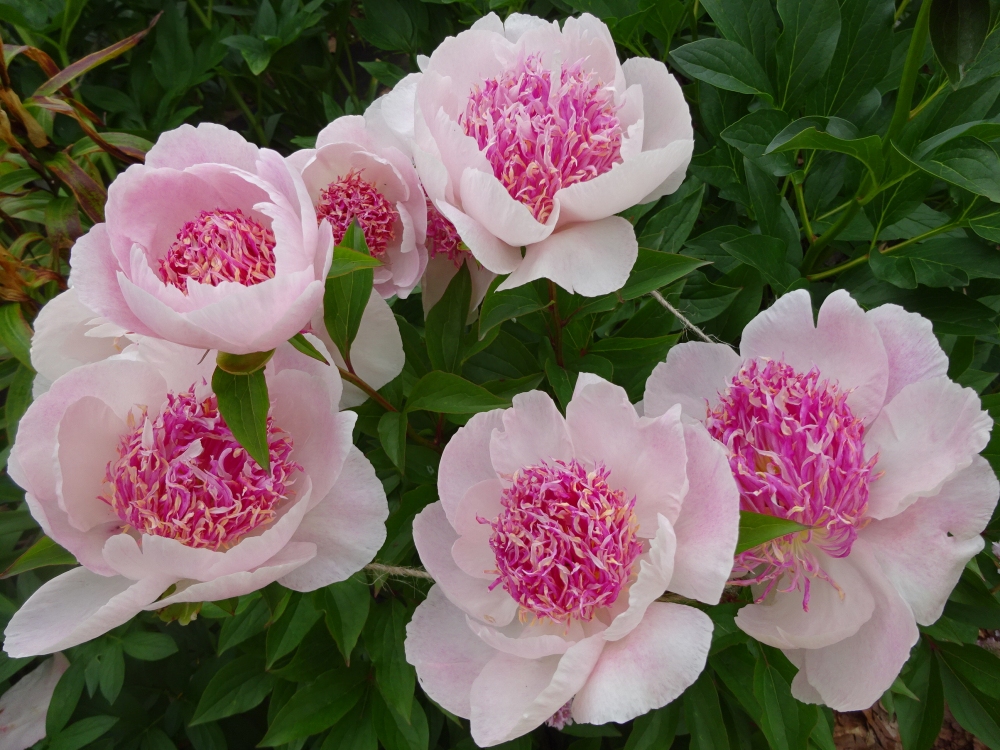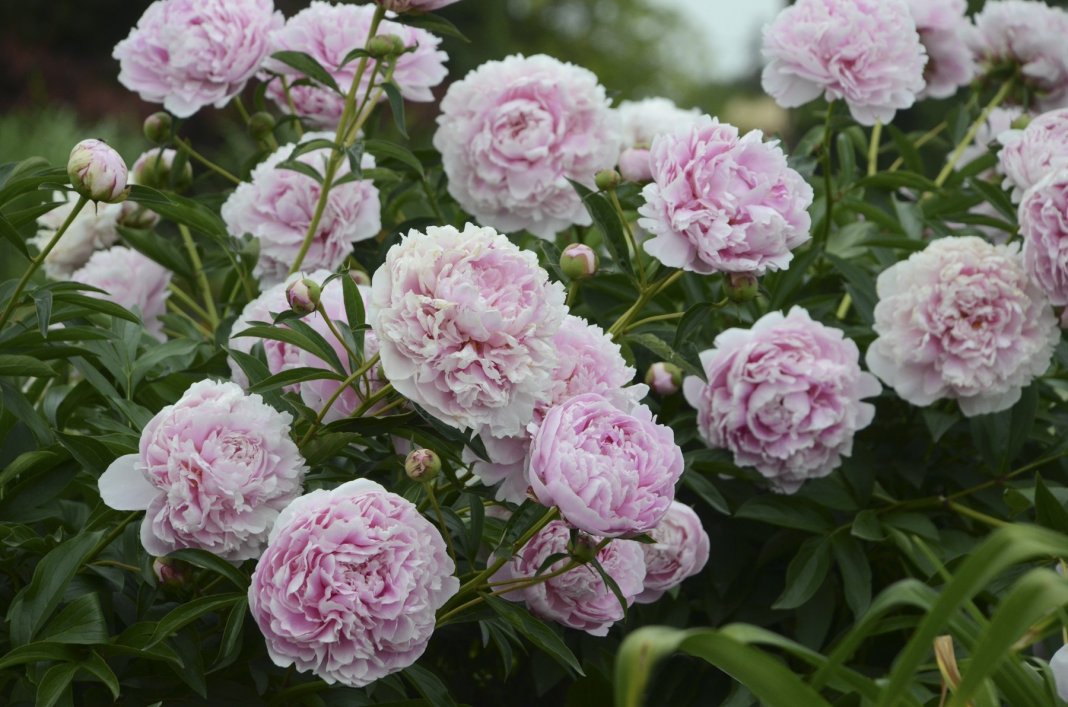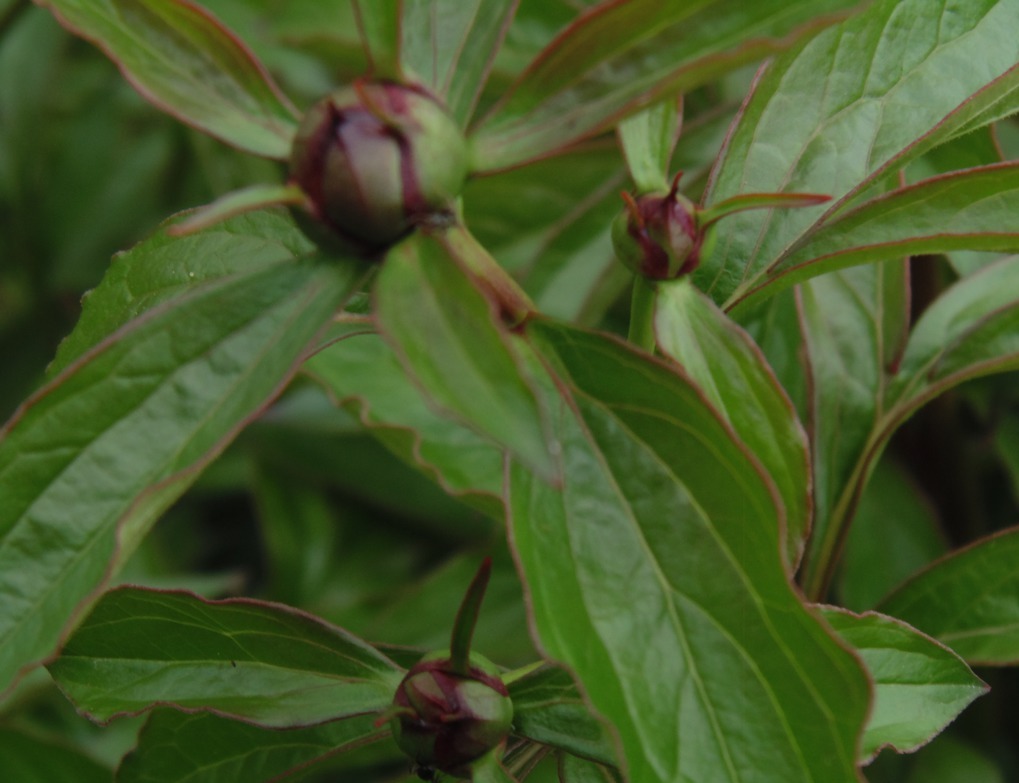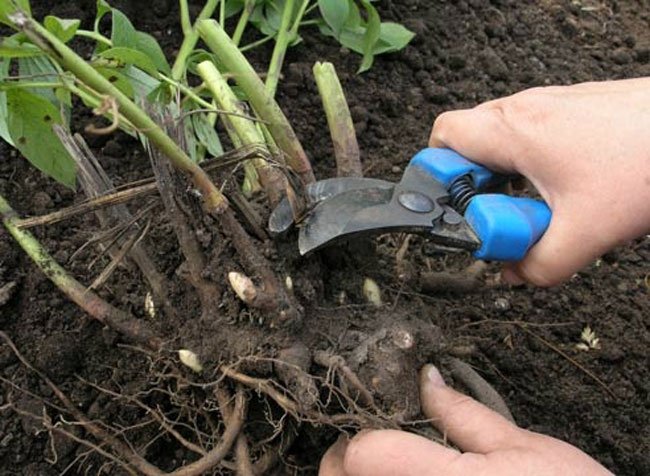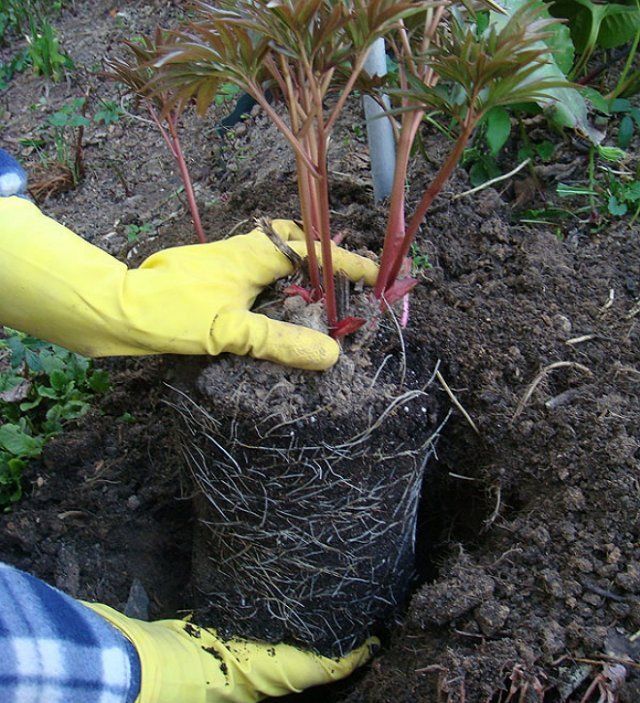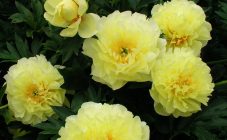Content:
Many summer residents have a place in the flower bed for peonies. The answer to the question of why this plant should be grown is obvious - it is a beautiful, perennial bush with large flowers that has a long flowering period (3-4 weeks) and does not require special care.
There are two types of flowers: herbaceous and tree-like. There are many varieties of peonies that differ in color and type of buds (simple and double), flowering time, etc.
In addition to decorative functions, peony is used in medicine. For example, a peony cone (a kind of thickened rhizome) was used for tincture, which was prescribed for anemia, cough, to normalize acidity in the human gastrointestinal tract, etc.
However, it may happen that the planted peony bush refuses to bloom. Why don't peonies bloom and what to do in such a situation? Flowering is influenced by both natural causes and those associated with planting and caring for plants.
Natural causes of lack of color
Why don't peonies bloom in the first year of life? In this case, it is quite natural, and the summer resident has no cause for concern. The fact is that the more powerful the bush, the larger and more color it has.
In the first year, only the accumulation of green mass occurs, as well as the formation of a full-fledged root system. During this period, the bush must gain strength, so that later it has the opportunity to throw out the buds.
If the division is small, then the beginning of flowering may take several years. The first flower may appear at 3-4 years of plant life.
If buds have appeared on the second year bush, then you need to leave 1-2, and remove the rest, since they are an extra load on the bush.
Why does not the plant bloom
If the bush does not bloom even for 3 years, or it constantly bloomed and suddenly stopped, then you need to look for the reason why the peony bushes that used to bloom did not bloom.
This may be due to a number of reasons:
- Peony bush overfed with nitrogen fertilizers. In this case, he will only increase the green mass. The foliage on the plant will be beautiful and powerful, but the number of buds will either greatly decrease, or they will not be at all. In this case, you need to stop feeding the flower, you will have to wait for the buds the next year.
- For normal flowering, both an excess of fertilizers and a lack of them are harmful to the plant. In an insufficient amount of fertilizers, perhaps, lies the answer to the question of why the buds of peonies dry up without blooming.
A peony is a plant in which renewal buds are laid two years before flowering. Therefore, feeding the plant is necessary not only in spring during flowering, but also after it. Only in the case of quality plant care can you expect abundant flowering of the bush.
In the spring, rotted manure or bird droppings are introduced under the flower. When the buds begin to bloom, you can feed the bush with nitrogen-phosphorus-potassium fertilizers.
In the summer, about a couple of weeks after the end of flowering, a working solution is prepared, consisting of 8 liters of water, 30 g of superphosphate and 15 g of potassium nitrate. Additionally, you can add cow dung to it.
- Why do peonies not develop and bloom buds? It is possible that the plant, which constantly pleased with beautiful flowers, is already quite old.In this case, it has a lot of damaged and dried roots. As a result, the root system is unable to fully nourish a large volume of green mass of the bush. On such flowers, even if a bud appears, then most often it will be unopened or will not fully open.
In this case, division and transplantation of divisions to new places can help.
After the plant has been dug up, you need to remove the dead roots with a pruner, divide the viable roots into small parts containing from 3 to 5 buds and plant the divisions in the prepared holes.
- Another possible reason that the bush refuses to bloom is that peonies are transplanted quite often, and the bush does not have time to develop.
It comes into full force in about the fifth year. Therefore, frequent division and transplantation deplete the plant, and it simply does not have the strength to bloom. What should be done in this situation? The way out is quite simple, you need to stop transplanting the peony from place to place and allow the plant to gain strength. It is recommended to start dividing no earlier than 4-5 years after planting a small cut. It is best to perform this operation once every 8-9 years.
- The reason why peonies did not bloom this year may be insufficient watering in July-August. Timely and sufficient watering during the summer encourages abundant flowering of the bushes the following year.
- Untimely peony transplant. The flower does not like very much when it is transplanted in spring. This is due to the fact that the plant starts to grow early enough, and the root system is necessarily injured during transplantation. Therefore, if it is necessary to transplant a peony bush, then it is best to do this either in late summer or in autumn.
- Another of the possible reasons that the adult bush did not bloom is too-grown peonies. At the same time, the development of the root system does not keep pace with the development of the aerial part of the plant, which leads to starvation of young shoots and, as a result, flowering stops during this period.
- The peony blooms poorly and develops on acidic soils. Therefore, the answer to the question of why the planted peony does not grow may be the composition of the soil that is not suitable for the normal development of the plant.
- An insufficient amount of potassium in the soil affects flowering. This can be especially evident on bushes planted on podzolic soil. In this case, it is necessary to fertilize the site with potash compounds. Top dressing is performed 1-2 times per season. For 1 sq. m add 10-15 g of potassium sulfate.
- Perhaps the bush does not bloom due to illness or pest damage.
Diseases of peonies
Plants are susceptible to fungal diseases. A very common disease that affects leaves, buds and flowers is gray rot. It manifests itself in the spring. Affected plants can be identified by gray patches around young shoots that form a ring over time. In these places, shoots rot, wither and die off.
The infected leaf becomes covered with large spots with indistinct edges. In a dry period, the leaf will dry out, and in a wet period, a gray coating appears on it, and the decay process develops rapidly.
When buds appear, rot also affects them. Large buds can bloom, but rather weakly and most often on one side. Small ones cannot even blossom. The affected unblown bud will brown and dry quickly enough.
The virus can be carried by planting diseased plants. Can be transmitted with ants.
Favorable conditions for the spread of the disease:
- sharp fluctuations in temperature;
- high humidity;
- cold rainy summer;
- high nitrogen content in the soil;
- placing plants in the shade.
If the plants are badly affected, then they are dug up and burned.If the disease has just begun to spread, then you can try to treat the bushes by treating them with fungicides, for example, copper sulfate.
Peony breeding errors
In order for the transplanted cut to bloom, it must be properly planted.
Since the bush develops for a long time in one place (about 10 years), it is important to prepare the place with high quality. Mistakes made during the reproduction of peonies lead to the fact that the bushes do not bloom.
Incorrect landing site
Peonies are light-loving plants, so planting should be done in a well-lit place. Also, the plant does not develop well in very dry or very wet places.
Incorrect preparation of the landing pit
The pit for planting should be deep enough - about 70-80 cm. If you plan to transplant the bushes every 5-7 years, then the pit can be made smaller, up to 40 cm deep. The diameter of the pit is at least 50 cm. Drainage is laid at the bottom. Broken brick, crushed stone or sand is used as drainage.
If you do not drain, the water in the pit can stagnate and the roots will rot.
A layer of nutrient mixture is poured on top, consisting of earth, humus and peat in a 1: 1: 1 ratio. Ash and mineral fertilizers are additionally added.
If the soil is heavy, river sand is added to the earthen mixture. If the soil is sandy, it is clay. Clay is necessary in order to retain moisture in the soil and thereby prevent the growth buds from drying out. In addition, moisture will keep the soil from freezing in winter.
Incorrect division of the bush
When dividing the mother plant, they form very small (1-2 buds) or very large divisions. If the bush is small, then it will bloom for a long time, since it will need to gain strength within several years.
Incorrect planting depth
Too shallow and too deep planting of the cut also does not contribute to obtaining abundant flowering.
Correct landing is when the distance from the upper kidney to the surface of the ground is 3-5 cm for heavy soils and 5-7 cm in the case of light ones.
If the depth is less than recommended, then in winter the buds will suffer from frost, and in summer - from heat. If it is deeper, then the color will be shallow and weak, up to complete absence.
Strongly thickened fit
It is recommended to plant the bushes at a distance of at least 1 m from each other. In extreme cases, it is allowed to reduce the distance to 60 cm. In dense plantings, plants develop and bloom poorly. They also increase the risk of developing various viral diseases. In this case, the peonies need to be dug up and transplanted, adhering to the basic planting rules.
If you follow the rules for caring for a peony, then the flowers will delight the owner for many years.
